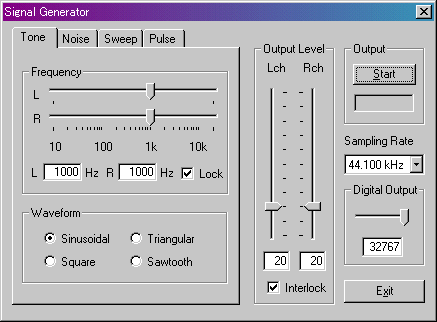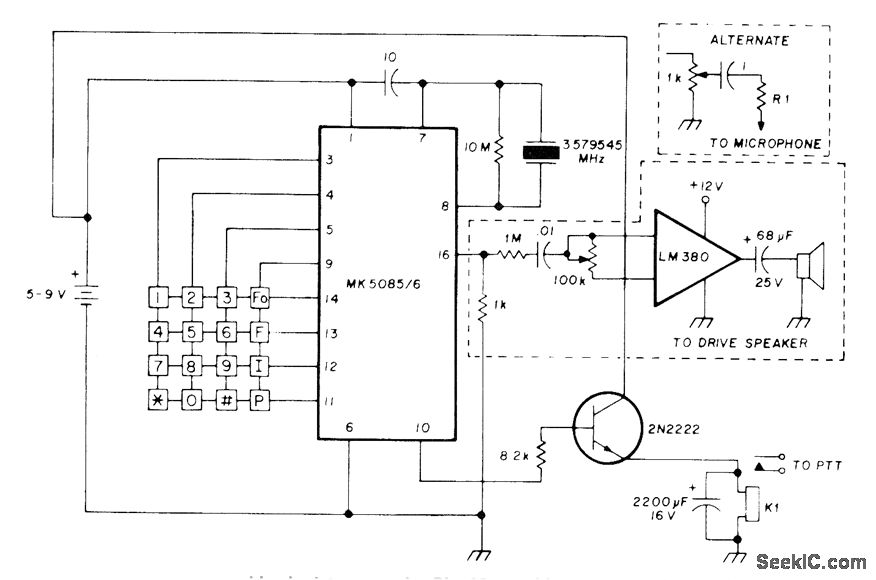

- #Tonegenerator send frequency generator#
- #Tonegenerator send frequency code#
- #Tonegenerator send frequency series#
Professional tone generator and probe kits are widely used for testing electronics, electrical, building maintenance, and construction.

The toner and probe kit comprises test leads, pointed probes, flat blades, alligator clips, batteries, and a hard carrying case. These test kits feature built-in LED headlights, which help illuminate dark areas, minimize fluorescent light noise an earphone jack for quiet and noisy work areas a bandpass filter that suppresses unwanted frequencies, and a battery cover to protect batteries. The tone generators can produce multiple tones including warble and pulse, and they can provide an audible and visual continuity test. Our tone generator and probe kits can trace various cable and wire types including: twisted pair, LAN, multi-conductor, telephone/alarm and unpowered electrical wire. These are very useful as well as less expensive for executing compare with the earlier signaling technique utilized by rotary dialed telephones.Triplett’s tone & probe kits feature our recognized Fox & Hound series. From the above information finally, we can conclude that the frequencies of DTMF tones are very beneficial as they permit telephones for indicating which digit is being pushed by the operator. Thus, this is all about Dual Tone Multi-Frequency technology, working, and its applications.

The applications of DTMF mainly involve the following. The power consumption will be reduced and power efficiency will be increased.By using this one can control the home appliances wirelessly.By using a single key we control six devices.By using this we can get a quick response.The advantages of DTMF include the following.
#Tonegenerator send frequency code#
Finally, the four-digit output binary code will be latched at the output of M8870 IC. The frequency which is filtered will be passed via these detectors. These filters use switched capacitors dividing DTMF tones into high and low group signals.įurther processing segments in the IC are code detector as well as frequency detector circuits. The operational amplifier is passed through a filter network like pre-filter, low group filter, and high group filters. The output of an inbuilt op-amp in the decoder IC is pin-3, the response signal is given by linking the pin3 to inverting input of pin-2 using a 270kΩ resistor. The op-amp’s non-inverting terminal is fed to pin-4, and the voltage at pin-4 is Vcc/2. The signals from the microphone pin are connected to an inverting i/p of an inbuilt operational amplifier in decoder IC through a resistor as well as a capacitor. The decoder IC M8870 includes an operational amplifier.

The Decoded Output for Row and Column Frequencies Key
#Tonegenerator send frequency series#
The microphone wire signals can be processed with the decoder IC to generate a binary series as a parallel o/p such as Q1, Q2, Q3, & Q4. Here the red wire is an input of the DTMF circuit. The microphone consists of two wires namely red wire and green wire. The signals from the DTMF can be tapped straight using microphone pin in the cell phone. The required components of this circuit mainly include M8870 decoder IC, Resistors- 70kΩ, 100kΩ, and 390kΩ, two capacitors- 0.1♟, and crystal oscillator– 3.579545MHz. The bits which are decoded can be associated with a microprocessor or a computer for future application. The entire communication includes the touch tone inventor as well as a tone decoder. The tone of the DTMF is a type of one way communication among the user and the telephone exchange switch room. This IC uses a technique of digital counting for deciding the tones frequencies, as well as to confirm that they communicate to normal frequencies of DTMF. The decoder IC decodes the DTMF input to five digital outputs. This circuit can be built with a decoder IC MT8870DE for the recognition of DTMF indications. This DTMF decoder circuit recognizes the phone tone from the phone line and then decodes the pressed key on the keypad of the telephone.


 0 kommentar(er)
0 kommentar(er)
